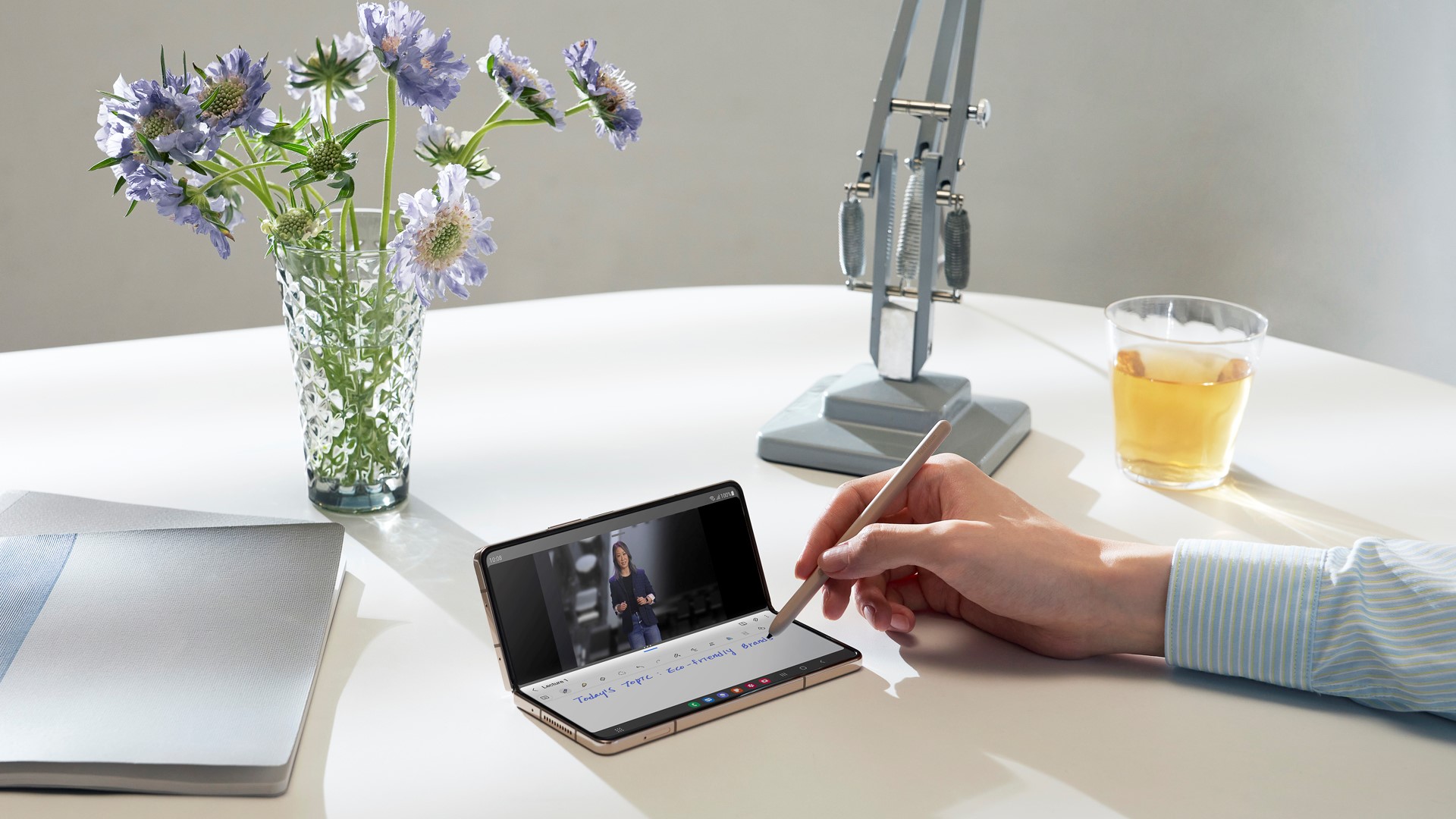The 2000s were a unique time for smartphone design. There were candybar phones, flip phones, slider phones and even taco phones (the gaming focused Nokia N-Gage placed its speaker and microphone on the side of the device rather than on the front).
Full QWERTY keyboards were popularised by BlackBerry and T-Mobile’s Sidekick (but probably not by the Nokia 5510) before the touch-screen ‘slate’ iPhone arrived in 2007, setting a rectangular standard for the industry to follow.
The early 2010s were a period of consolidation as the industry migrated towards two main platforms – iOS and Android – and a handful of manufacturers.
The battle at the top
Smartphones were still hugely desirable and attractive items, becoming more powerful and feature-packed, but there was little differentiation on form factor beyond size.
Most of these devices looked good - and there was no way you could launch a device without an interactive display - but what was the last smartphone that really made you stand up and go ‘wow’?
For me it was the iPhone 4 or the original HTC One. Until last week, that is.
When Samsung first launched the Samsung Galaxy back in 2010, it kickstarted a legal dispute with Apple over claims the handset essentially mimicked iPhone’s iconic design – litigation that was essentially settled. More than a decade on and Samsung could never be accused of copying Apple’s homework.
As the nomenclature suggests, the Samsung Galaxy Z Fold 4 and Z Flip 4 are not the first foldable or flip devices the company has launched in recent times. But the scale of the launch and the significant the Korean electronics giant is placing on the announcements suggests form factor could be a new battleground at the top of the market.
The company remains the world’s largest smartphone manufacturer in terms of shipments, but it is second-placed Apple that dominates the high-end, higher margin premium segment.
Samsung (and Google) have done plenty to make the process of switching to Android as painless as possible but the unparalleled brand loyalty commanded by Apple, coupled with the lure of its tightly integrated ecosystem, means luring customers away from iPhone is a formidable challenge.
This is especially true in the premium segment when price isn’t so much of a factor.
Hardware differentiation hasn’t necessarily been a decisive issue in recent times, either. Samsung has included plenty of innovations in its flagship devices, including near field communication (NFC), wireless charging, and 5G, long before Apple followed suit. But it was unclear whether this caused any defections.
But by offering a truly unique form factor – and one that Apple’s portfolio cannot match – Samsung could win customers away from its great rival in a way that internal specs and software cannot. The Samsung Galaxy Note had a loyal fanbase that still laments that product’s demise and even BlackBerry had its supporters until the company’s mobile business finally closed its doors.

Innovation with substance
Analysts suggest the fact that Samsung has already created multiple generations of the Galaxy Z Fold and Z Flip will do much to convince consumers that these are not just gimmick devices, but genuine product lines that have been created through years of refinement
“The Z Flip 4 and Z Fold 4 will be almost indistinguishable from their predecessors to most consumers. Although Samsung may be criticised for this, it makes sense to take an iterative approach given foldable devices are currently such as small segment of the overall smartphone market,” said James Manning Smith, Senior Analyst, CCS Insight.
“In most cases, a consumer buying one of Samsung’s new devices will be getting one for the first time so won’t really have anything to compare it with.
“Samsung’s iterative approach makes sense. We suspect it is still learning lots about the complexities of engineering this new category of products and although the phones look very similar to earlier models, they include numerous improvements such as better durability, longer battery life and multiple user experience updates.
“Samsung will be hoping the improvements to its foldable smartphone line up make the phones a more reliable rather risky purchases in the eyes of consumers and it should be applauded for its tireless work in developing the category."
These devices are unlikely to have mass market appeal just year, especially when the cost of living is placing such a squeeze on household incomes, but could be novel enough to attract early adopters and tech enthusiasts eager for something different.
Indeed, it could be the start of a wider trend with Oppo, one of several vendors hoping to achieve the number three spot and crack the European market, also reportedly working on its own foldable handset.
The slate design will persist for some time but as the smartphone becomes a hub for multiple connected devices rather than an ‘all-in-one’ unit, perhaps we are beginning to see a new era of diversity.
“In a homogenous market of black touchscreen rectangles, it makes sense for Samsung to have products for users that want something that stands out from the crowd,” added Manning-Smith.
Who knows maybe even Apple will get in on the act?
- Here are the best Samsung phone deals
from TechRadar - All the latest technology news https://ift.tt/wnkS6Du







No comments:
Post a Comment